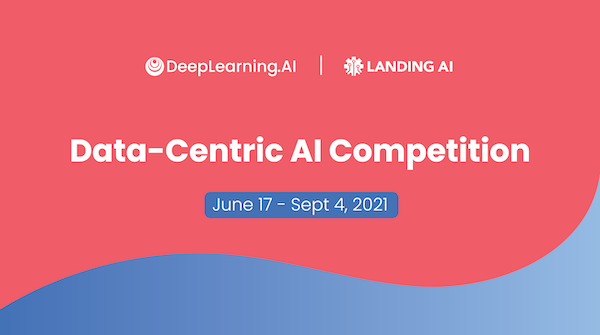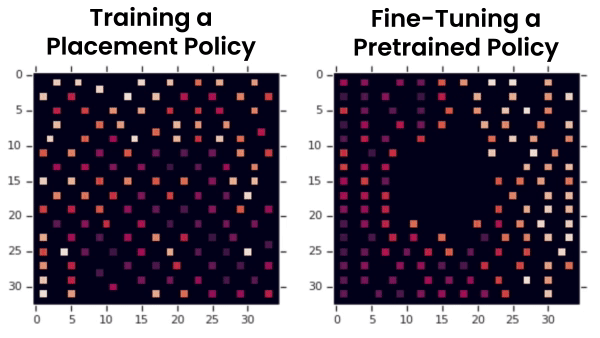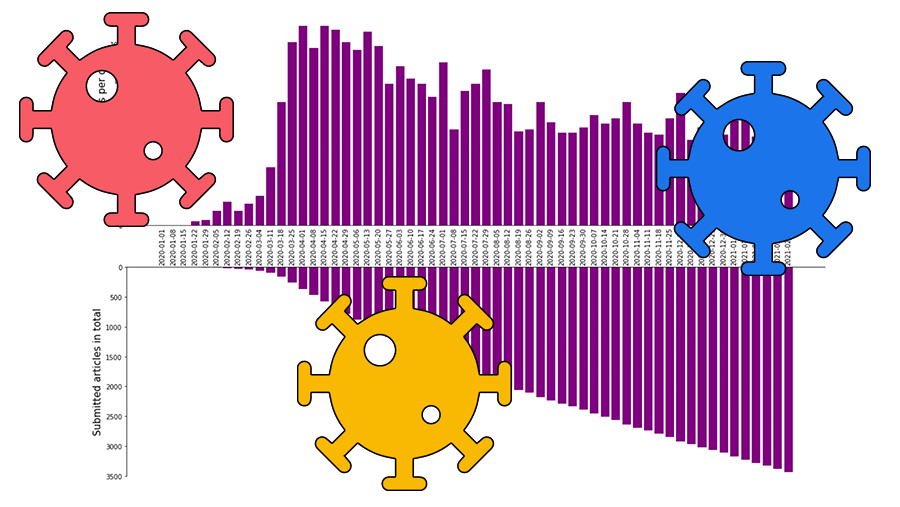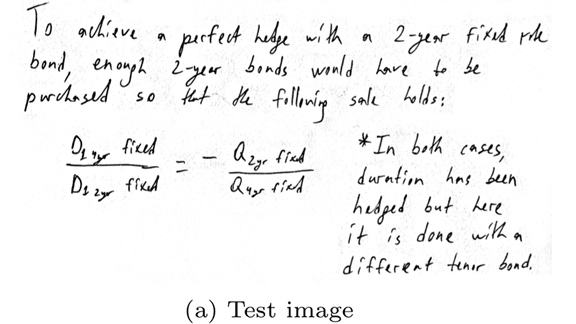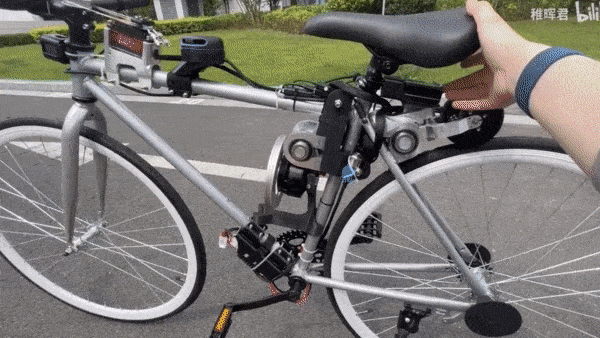Dear friends,
I’m thrilled to announce the first data-centric AI competition! I invite you to participate.
Can you develop a dataset that results in the best performance on this problem?
The competition will end on September 4, 2021 — the birthday of John McCarthy, who coined the term artificial intelligence. The winners will be invited to join me at a private roundtable event to share ideas about how to grow the data-centric movement, and I will highlight their work here in The Batch.
There will be more data-centric AI competitions in the future. But if you join this one with me, you’ll be able to tell your friends that you were there at the very beginning of the data-centric AI movement! You’ll find further information here.
Keep preparing data!
News
Computers Making ComputersA neural network wrote the blueprint for upcoming computer chips that will accelerate deep learning itself. What’s new: Google engineers used a reinforcement learning system to arrange the billions of minuscule transistors in an upcoming version of its Tensor Processing Unit (TPU) chips optimized for computing neural networks. The system generated the design in six hours rather than the usual span of weeks, as detailed in Nature. Key insight: Designing a chip is like playing a board game. A silicon wafer’s area resembles a board, parameters like macro counts and netlist topologies resemble pieces, and evaluation metrics resemble victory conditions. Reinforcement learning (RL) excels at meeting such challenges: Think of DeepMind’s AlphaGo — the RL model that, in 2015, became the first computer program to beat a Go master on a full-size board without a handicap. How it works: Google introduced its approach in a paper published last year.
Results: The researchers compared their system’s output to that of a human team who had designed an existing TPU. Their approach completed the task in a fraction of the time, and it either matched or outperformed the human team with respect to chip area, wire length, and power consumption. Behind the news: Google introduced the first TPU in 2015, and today the chips power Google services like search and translation and are available to developers via Google Cloud. Launched last month, the fourth-generation TPU can train a ResNet-50 on ImageNet in 1.82 minutes. Why it matters: AI-powered chip design could cut the cost of bespoke chips, leading to an explosion of special-purpose processing for all kinds of uses. We’re thinking: Reinforcement learning is hot, and we’ve seen companies announce “RL” results that would be described more accurately as supervised learning. But this appears to be a genuine use of RL ideas, and it’s great to see this much-hyped approach used in a valuable commercial application.
AI Against Covid: Progress ReportA new report assessed how AI has helped address Covid-19 and where it has fallen short. What’s new: Machine learning systems haven’t lived up to their promise in some areas, but in others they’ve made a substantial impact, biomedical engineer Maxime Nauwynck wrote in The Gradient, an online journal of machine learning. Application areas: The author surveyed only systems specifically designed or adapted to fight Covid-19.
Behind the news: AI-powered health monitoring systems from BlueDot and Healthmap made headlines early last year when they reported a novel disease outbreak in the Wuhan area one week before the World Health Organization issued its first warnings. Why it matters: While AI is no panacea, this inventory makes clear that the technology has made significant contributions to the fight against Covid-19. We’re thinking: When new technology meets a previously unknown illness, there are bound to be hits and misses. The successes should help us prepare for — or, better yet, avoid — the next contagion.
A MESSAGE FROM DEEPLEARNING.AI
Coming soon! “Machine Learning Modeling Pipelines in Production,” Course 3 in the Machine Learning Engineering for Production (MLOps) Specialization, launches on Coursera on June 30, 2021. Pre-enroll now!
The Writing, Not the DoodlesSystems designed to turn handwriting into text typically work best on pages with a consistent layout, such as a single column unbroken by drawings, diagrams, or extraneous symbols. A new system removes that requirement. What’s new: Sumeet Singh and Sergey Karayev of Turnitin, a company that detects plagiarism, created a general-purpose image-to-sequence model that converts handwriting into text regardless of its layout and elements such as sketches, equations, and scratched-out deletions. Key insight: Handwriting recognition systems typically use separate models to segment pages into blocks of words and turn the writing into text. Neural networks allow an end-to-end approach. Convolutional neural networks are good at processing images, and transformers are good at extracting information from sequences. A CNN can create representations of text in an image, and a transformer can turn those representations into text. How it works: The system feeds pages through an encoder based on a 34-layer ResNet followed by a transformer-based decoder.
Results: On IAM, the author’s system achieved a character error rate of 6.3 percent, while an LSTM designed for 2D achieved 7.9 percent. On Free Form Answers, it achieved a character error rate of 7.6 percent. Among Microsoft’s Cognitive Services, Google’s Cloud Vision, and Mathpix , the best achieved 14.4 percent.
A Bicycle Built for ZeroSelf-driving cars, get ready to share the road with self-riding bikes. What’s new: Beijing-based machine learning researcher Zhihui Peng built a riderless bike that stays upright, navigates, and avoids collisions, Synced Review reported. You can watch Peng’s video presentation here. How he did it: Zhihui calls his design eXtremely Unnatural Auto-Navigation (Xuan).
Behind the news: Zhihui was inspired by a 2016 April Fool’s Day prank played by Google. In a video that announced “Google’s Self-Driving Bike,” the company made it appear as though a two-wheeler had driven itself through the streets of Amsterdam. Why it matters: Self-driving bikes aren’t necessarily a joke. A self-driving motorcycle helped to attract attention to the 2004 Darpa Grand Challenge, which kick-started the current self-driving movement. Zhihui’s contraption is a DIY project, but it may prefigure summonable e-bikes, autonomous food deliveries, or steering control for long-distance cyclists who need a break from the handlebars. We’re thinking: We look forward to the self-pedaling unicycle.
Work With Andrew Ng
Data Analyst (Latin America): Factored is looking for expert Data Analysts to analyze datasets, gain insights using descriptive modeling, and code non-trivial functions. A strong background in coding, specifically in Python or R, and a high level of English are required. Apply here
Data Engineer (Latin America): Factored is looking for top Data Engineers with experience with data structures and algorithms, OS, computer networks and object-oriented programming. You must have experience with Python and an excellent level of English. Apply here
Data Engineer - Database (Remote): Workera is looking for a Data Engineer to expand and optimize our transactional and analytical database design, work with analytics stakeholders to define database requirements, and create ETL and data collection scripts for cross-functional teams. Apply here
Data Scientist - Psychometrics: Workera’s looking for a data scientist to develop a computer adaptive testing platform, analyze items, and leverage a large skills dataset to improve our assessment capabilities. Apply here
Subscribe and view previous issues here.
Thoughts, suggestions, feedback? Please send to thebatch@deeplearning.ai. Avoid our newsletter ending up in your spam folder by adding our email address to your contacts list.
|

